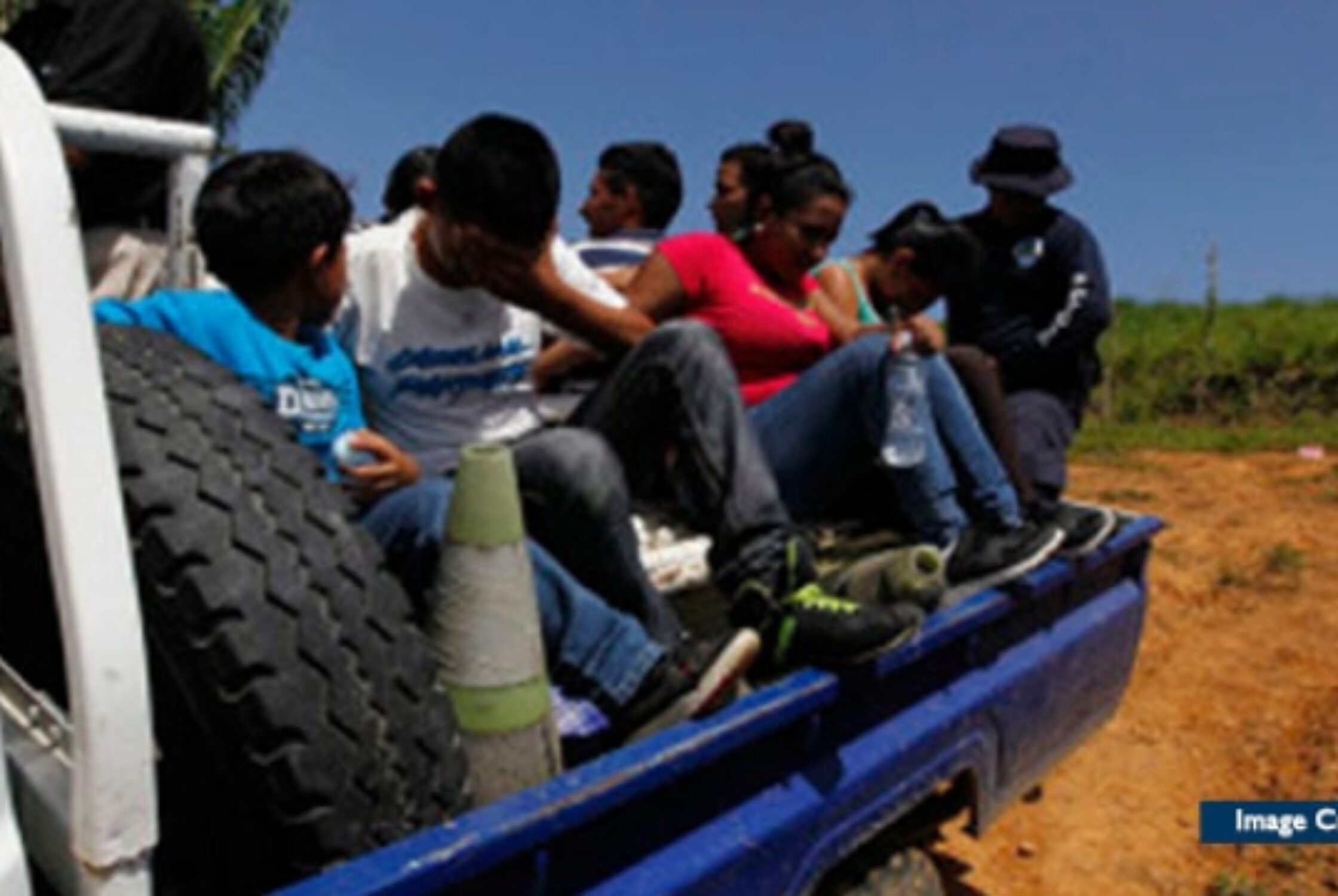The Tragic Link Between Gang Violence and Displacement in Central America

From the massive migration of an estimated 70,000 unaccompanied children to the U.S. border this past summer to President Barack Obama’s recent executive action on immigration reform, issues facing Central America have entered the national spotlight here in the US. The underlying internal displacement trends within Central America have not received as much attention, but are perhaps even more important as they reveal a frightening relationship between gang violence and forced migration within Central America.
The “Northern Triangle” of Central America is made up of Honduras, Guatemala, and El Salvador, three small countries that are also home to massive crime and homicide rates. Nicknamed the “murder capital of the world,” Honduras has the highest murder rate in the world at 85.5 homicides per 100,000 people. El Salvador ranks second with 69 homicides per 100,000 people, and Guatemala comes next with 40 homicides per 100,000. According to the UN, homicide rates this high are considered epidemic.
Much of the violence can be traced back to the two biggest gangs operating throughout these three countries: Mara Salvatrucha and the 18th Street Gang, which together have between 60,000 and 70,000 members. Although official gang operations differ by country, major activities of gangs include drug trafficking, money laundering, arms smuggling, and extortion. One of the ways that gang operations affect communities is by creating a culture of fear – oftentimes people don’t venture between neighborhoods for fear of being attacked, and so cannot go to work or attend school. In some cases, refusal to pay extortion fees or join the gangs results in kidnappings and killings. In these countries, where it is estimated that almost every family has had a relative killed, kidnapped, or attacked, many families move as a way to escape violence.
One of the ways that gang operations affect communities is by creating a culture of fear – oftentimes people don’t venture between neighborhoods for fear of being attacked, and so cannot go to work or attend school. In some cases, refusal to pay extortion fees or join the gangs results in kidnappings and killings.
According to a recent UN Refugee Agency (UNHCR) report on the Northern Triangle region, an estimated 30,000 people in Honduras have been internally displaced due to violence. In El Salvador, the number is even higher at 124,000. In one personal story recorded by the UNHCR, a 17-year old Honduran described his reasons for leaving home: “My grandmother is the one who told me to leave. If you don’t join, the gang will shoot you. If you do, the rival gang or the cops will shoot you. But if you leave, no one will shoot you.”
The absence of an official conflict or war makes addressing the situation complicated, especially due to the covert nature of gang operations. The unwillingness of authorities to investigate crime is also a problem as many government officials are believed to benefit from the drug trade. Many victims of violence don’t file complaints or press charges after experiencing violence because they fear being persecuted by gangs, which adds to the chaos and perpetuates the cycle of violence and displacement.
The issues of violence and internal displacement are slowly being addressed by Central American governments, non-government organizations and United Nations agencies, and the U.S. government. Two of the biggest shortcomings are a lack of statistics on the scale of internal displacement and lack of protection for internally displaced people. The UNHCR is working with the Universidad Nacional Autonoma de Honduras (UNAH) to establish better figures on the country’s displaced population, and in August 2013 the Honduran government signed an agreement with the UNHCR to provide better protection to IDPs. As more and more people are displaced because of violence, there is no time to waste in finding a way to give these people the protection they need.
Ellen Cannon is a former Refugees International intern.
Photo: Trying to make their way to the U.S., unaccompanied children and a family are detained on the Honduras-Guatemala border. REUTERS photo.